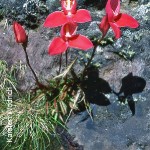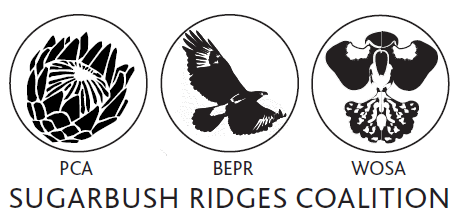Disa uniflora
Description
Slender, fairly robust terrestrial, growing up to 600mm tall. Spreads via underground stolons. Leaves at the base are narrow, spear shaped and up to 250 mm long. Inflorescence usually has 1 flower, but can sometimes have up to 3. Lateral sepals and lip carmine in colour with a sparkling texture when viewed in full sunlight. Galea orange or yellow inside with red spots and forked veins. Yellow flowered specimens have also been found. This species is very variable in the size of the plants and colouration of the petals and sepals. This is undoubtedly our most spectacular and well-known orchid and is in the badge of the Western Province Rugby Union.
Distribution in South Africa
Occurs only in the southern part of the Western Cape, where it is endemic.
Please submit your orchid photographs to OrchidMAP as citizen science records to improve this map.
Register on the Virtual Museum or login.
Typical habitat
Common along perennial streams and wet seepage areas over cliffs, from sea level to 1450m.
Flowering Period
This species typically flowers between January to March with the peak flowering time the second week in February on Table Mountain. Pollinated by the mountain pride butterfly.
Distribution elsewhere in Africa
Endemic to South Africa
Conservation Status
Not endangered for now. Widely grown in other parts of the world in private collections with spectacular hybrids with other evergreen species being regularly registered.
All orchids are protected under CITES regulations.
References and additional information
Johnson, S.D., Bytebier, B., Stärker, H. (2010). Orchids of South Africa: A field guide. Struik Nature, Cape Town, South Africa.
La Croix, I.F., la Croix, E. (1997). African Orchids in the Wild and in Cultivation. Timber Press, Portland, Oregon, USA.
This genus and species article was written by Duncan McFarlane and published 2018-04-24.
Proof read and published by Karsten Wodrich
Images
Version 1.2


